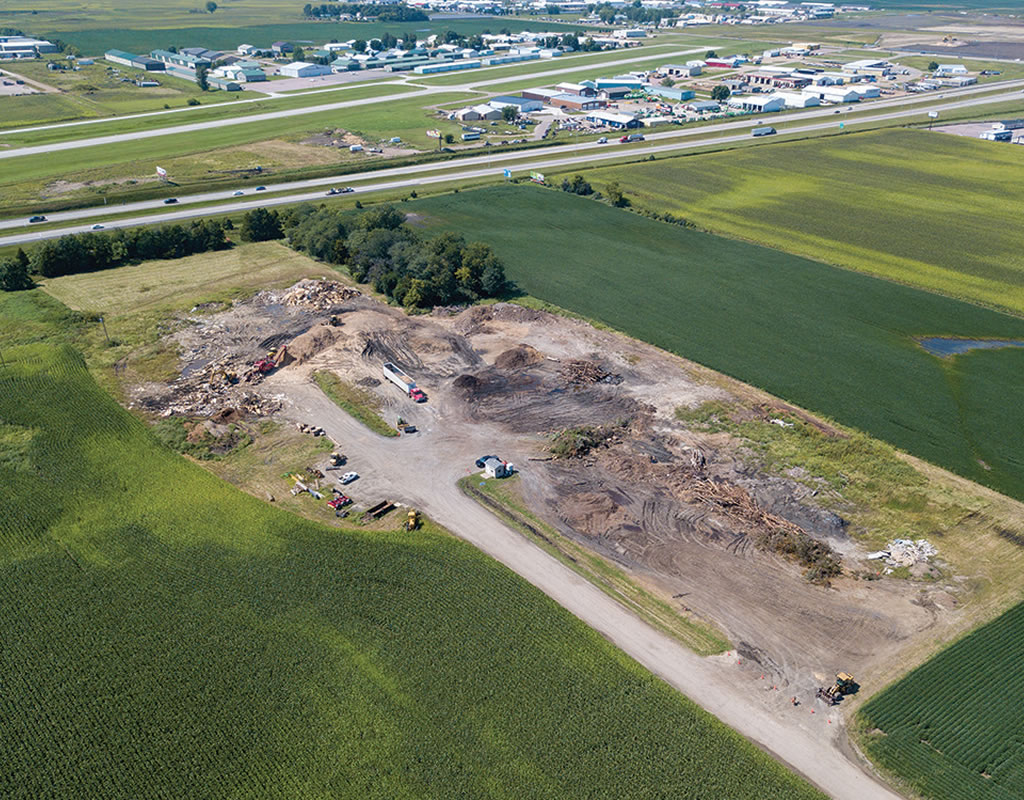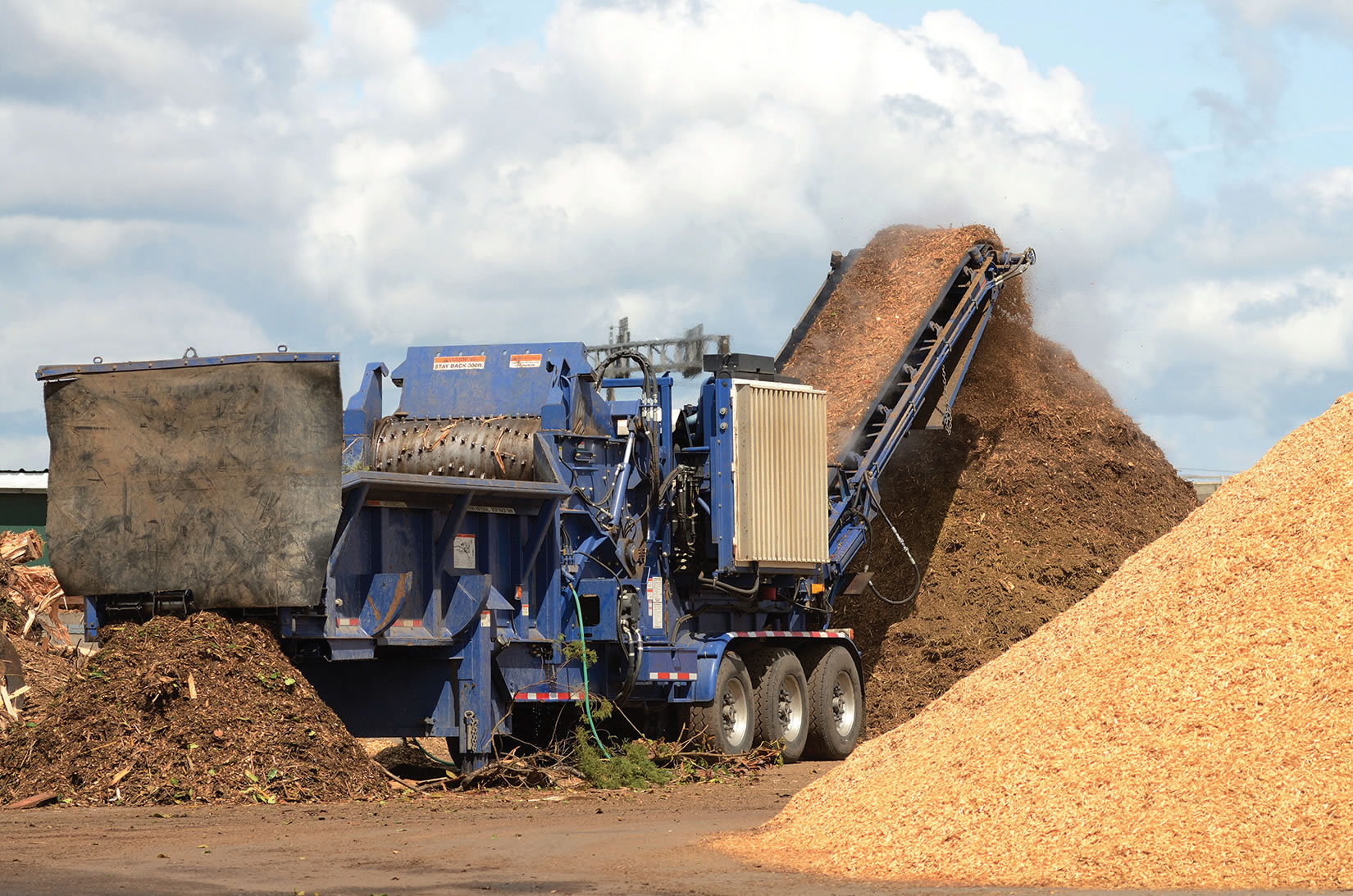By Robert L. LaGasse
Executive Director Mulch & Soil Council
“Do you want your children to grow up to be truck drivers?”
That was the question posed by Philip Byrd, then president of the American Trucking Associations (ATA) and Bulldog Trucking, when he spoke to members of the Mulch & Soil Council about the issue of a looming truck driver shortage.
Not a single hand went up in response to his question.
When that exchange took place in 2003, the estimated national truck driver shortage was around 20,000.
By 2019, the pre-pandemic estimate for the national truck driver shortage had risen to 60,000 drivers, the ATA reported.
“Nearly every good consumed in the U.S. is put on a truck at some point,” the ATA notes. “As a result, the trucking industry hauled 72.5 percent of all freight transported in the United States in 2019, equating to 11.84 billion tons.”
The demand for drivers has continued to skyrocket.
With e-commerce sales surging during the coronavirus pandemic — along with returns of approximately 38 to 40 percent of those total sales —even more pressure was put on the trucking industry to deliver in both directions, pushing the shortage of drivers to 80,000, according to the ATA.
Futurist Nikolas Badminton predicts the need for drivers will explode to 162,000 by 2030, just eight years from now. Autonomous vehicle operations will fill some gaps in short-haul and regional trucking demand, but significant driver shortages will persist into the foreseeable future.
Much of the driver shortage is blamed on poor pay, lack of benefits, difficult working conditions and the aging trucker population averaging over 56 years of age. The number of drivers employed in 2020 dropped to 3.36 million, nearly a 7 percent decline from the previous year.
Despite the pressure that transportation issues have on current national supply chain problems, the Federal Motor Carrier Safety Administration (FMCSA) on Feb. 7 implemented a long delayed (since 2016) rule having significant impact on entry level driver training (ELDT). Among industries hard hit by the rule are mulch companies.
Previously, anyone who wanted a commercial driver’s license only needed to apply and pass the knowledge and skills tests in the state where they live. How the applicant was trained was not an issue — only that they passed the tests.
The new regulation requires applicants for a commercial driver’s license, including Class A and Class B and/or Hazardous Materials Endorsement, to first have a certificate from an approved driver training program before they can apply and take the knowledge and skills tests in any state.
Some 24 percent of Mulch & Soil Council (MSC) members had in-house training programs. Those programs, unless previously approved, were instantly outlawed by the new regulation. The typical company in the MSC has 17 trucks, although not all of them require a commercial driver's license. A shortage of drivers also plagues the industry, regardless of whether they contract out for shipping as most do or handle it in-house.
FMCSA, part of the U.S. Department of Transportation, has an online list of about 4,000 approved training programs nationwide which can, in some cases, present a geographic challenge for potential trainees. The training school programs can cost from $2,000 to more than $10,000, with a national average estimated at approximately $6,500 to $7,500.
The Mulch & Soil Council objected to the rule change but was told it had very few allies and the major trucking industry supported the rule change because they did not generally employ entry-level drivers.
“With an increasing number of people applying for CDLs over the past year, there has never been a more important time to implement minimum uniform training standards that ensure new drivers have both the knowledge and skills to operate safely,” said Jack Van Steenburg, executive director and chief safety officer at FMCSA. “The ELDT regulations were developed with input from driver and training organizations, motor carriers, state licensing agencies, safety advocacy groups, and insurance companies.”
The rule, however, virtually eliminated most existing in-house entry-level driver training programs for small businesses who depend on entry-level drivers, cannot afford to send employees to training schools due to costs or location, and cannot qualify as an approved driver training program under the new regulations.
To address those concerns, the Mulch & Soil Council has come up with three options for the industry. The approaches are self-administration, a hybrid administration or no administration. For the industry, the question comes down to how much do they want to get into licensing drivers.
OPTION 1: Self-Administered In-House Training
Matt Smith at Smith Creek in Borden, IN, chose to become an FMCSA-approved training facility.
Wade Stevens, safety manager at Smith Creek, said he had to register with FMCSA and was approved as a training facility.
“For the ELDT program, you have to kind of purchase a content program in order to be compliant,” he explains. “They throw a few options out there and we opted to use JJ Keller.”
Stevens said Smith Creek paid $60 each for 20 students to access more than 40 hours of Keller ELDT online programs. Stevens conducts the training using the Keller resources and then records and tracks progress. Behind-the-wheel training is provided by a qualified commercial licensed driver at Smith Creek; Stevens records and tracks that progress until all training modules and requirements are completed. He then manually enters the data into the FMCSA online database. When everything is approved by the agency, a certificate is issued. Stevens then schedules the driver to take the knowledge and skills tests for a CDL.
Stevens says the new process isn’t really difficult but is more cumbersome and more costly than previous training.
“We only need to train one driver every few months, so the administration isn’t really a big problem,” he says. “But our driver ranks are getting older, and retirements are starting to have an impact.
“If you have a higher turnover rate, self-administering as a training provider could become more cumbersome and time consuming if you have to juggle a lot of guys in the program,” he adds. “For the level of turnover we have, I wanted to control the training process and our current program is working well for us.”
OPTION 2: Hybrid Outside Administration With In-House Training
For companies that don’t have the in-house training resources to support the higher administration level required by the FMCSA rule change, the National Propane Gas Association offers a hybrid program for outside content and program administration and in-house training.
“The ELDT mandate will make finding qualified drivers even harder,” the association notes.
The National Propane Gas Association Administrative Compliance Expert (NPGA ACE) program is open to outside companies and provides ELDT training for Class A/B and HME commercial driver licenses. It is registered with FMSCA as a training provider. It offers two levels of services:
— Basic Service. A self-administered program that provides ACE-generated checklists and 32 training modules of required theory instruction and behind-the-wheel instruction checklists, ACE-generated checklist of equipment requirements, ACE-generated completion forms and recordkeeping forms, and ACE staff access for Q&A.
A company applying for basic service has to register as a training provider and track and submit all student training records and information to the FMCSA. Non-Member Cost: $275
— Deluxe Service. This provides everything in the basic plan plus access to ACE-generated forms, checklists, ACE Services team review for accuracy and completion of all forms, checklists and completed information. There is also an assessment at the end of the course (80% passing score). ACE serves as the registered training provider and submits completion information to FMCSA and maintains driver-applicant records for ELDT compliance. Non-Member Cost: $620.
If you use NPGA ACE Services, you still use your own staff for behind-the-wheel instruction. Any individual on your staff who holds a CDL at or above that which they are instructing, for at least the last two years, and meets the commercial motor vehicles instructor requirements in your state, can serve as the behind-the-wheel instructor. ACE will have the instructor complete forms for ACE’s recordkeeping. ACE can also provide the requirements for the state where you are operating. For more information on the program and the costs for the packages offered, see the NPGA ACE website or email: eldt@npga.org.
OPTION 3: In-House After CDL Training
Steve Liffers, co-president of Swanson Wood Products in Longview, WA, says he has had good success finding employees who want to be drivers.
‘They sign a contract, and we pay for them to get their CDL at a local FMCSA-approved driving school,” he explains. “When the employee gets their CDL, we start in-house training by putting them first in smaller trucks with an experienced driver. When the senior driver says they are ready to go on their own, we step them through a series of larger vehicles with experienced drivers until they are approved to drive on their own wherever we need them.”
The student loan for driver training is about $5,000 and takes about two years to repay, at which time the driver gets a pay increase which is enhanced even more by the end of the payroll deduction for the loan.
Regardless of which training option is chosen, it’s clear that the mulch and soil industry is in a battle with everyone else worldwide for over-the-road shipping.
It will take years to determine what, if any, impact the change in entry-level driver training rules has on over-the-road safety. In spite of new government regulations and the tremendous shortage of drivers nationwide, mulch and soil companies are finding new ways to meet their needs in an increasingly difficult market.
The Mulch & Soil Council began in 1972 and is the national association of producers of horticultural mulches, consumer potting soils and commercial growing media. Its mission is to define quality products and promote an open market and fair competition. To learn more about The Mulch & Soil Council, visit mulchandsoilcouncil.org or call 806-832-1810.
Related News
Subscribe Today
Every other month, Soil & Mulch Producer
News brings you important stories about:
• New Technology
• Products
• Industry News
• Research Studies
Soil & Mulch Producer News features articles and services relevant to your daily operations.











